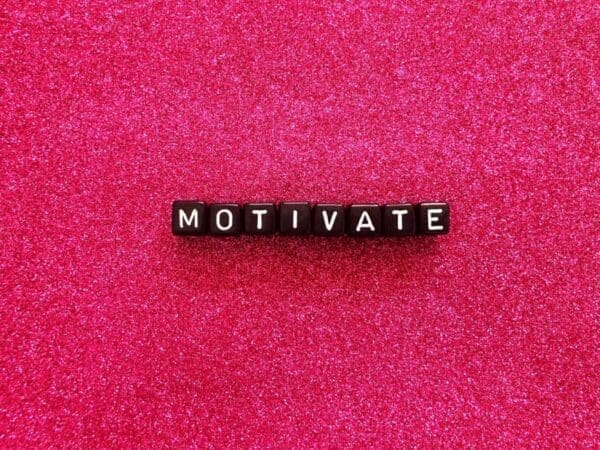Every Business Wants to be Successful and Generate Results
If only there was a simple formula we could use to make that happen. Well actually, for decades there has been. Maybe you’re not familiar with it but that’s what we’re sharing with you today. We are looking at John Adair’s Action Centred Leadership model.
Here we will look at what the model is and the main elements of the concept. We will see the key functions and why the model is important. Also, we need to understand the advantages and disadvantages of the model as well as how to use it in your company.
All leaders, at every level, should know and be able to use this model in their daily operations. We can adapt this model to any situation and goal, regardless of the size of the task at hand.
Article Overview
- What is John Adair’s Action Centred Leadership Model?
- The 3 Main Elements of Action Centred Leadership
- Achieve the Task
- Key Leadership Functions for Action Centred Leadership
1) What is John Adair’s Action Centred Leadership Model?
Back in 1973, British leadership expert John Adair published his action centred leadership model. It’s also known as the “three-circle” model. He developed this model during the 60s to show a more relevant and modern leadership approach. This model moved away from older theories that no longer fit into the workplace dynamic.
Adair’s action centred leadership model is not a leadership style. Instead, it is a practical theory that can be used in any industry and at any level. One key concept of this model is the fact that Adair showed that leadership can be taught. Therefore, we can all be effective leaders by learning how to do it. It is not simply that all leaders are born that way. Instead, Adair shows us through his theory that everyone one of us has the potential to be an effective leader once we learn how.

2) The 3 Main Elements of Action Centred Leadership
Adair’s model has 3 main elements that we will look at now. These are Task, Team, and Individual. In its visual depiction, these three circles are interconnected. This means that all of the three elements are interdependent on each other for success. So, all of the elements need to get the right amount of attention to achieve success. We have different focus areas and responsibilities within each element for it all to come together.
3) Achieve the Task
As leaders, we need to focus on a number of responsibilities to achieve the TASK. Here we will explain some of them.
Clear Vision

We need to have a clear vision to give proper direction. This allows us to show the path we are planning to take. It will show the route the team needs to take as well as milestones along the way. We need to be able to have a clear road map to create buy-in and clarity at the start of the task. This allows members of the team to understand the expected end result.
Identify the Right Skill Sets
Leaders also need to be able to identify the right skill set needed to achieve the task. Once we know what we want to achieve, we need to be able to understand the mix of experience, skills, and knowledge we will need. This is important to ensure the task can be achieved. We will need to have the right combination within the team of individual strengths and capabilities.
Secure Resources
Also, leaders need to be able to secure the right resources for the team to complete the task. This can include finances, software, equipment, and machinery. We cannot expect the proper results without being able to supply the necessary tools and equipment to get the task done.
Areas of Responsibilities
Another responsibility we have is to ensure we have clarity about areas of responsibility. The team members need to understand their roles as well as their level of accountability. Here, we can set out a detailed plan of what everyone will be doing throughout the entire task. Also, we should be clear about any possible consequences for not achieving their part of the task as stated.
Set Standards
We also need to set the expected standards to achieve the task. We cannot have different people in the team doing the same task in different ways. These can be quality standards that everyone should follow. We can also set standards by creating visual or situational examples of these expectations. For example, we want the store set up in a particular way. We can provide visual aids that clearly define the expected layout that is required.
Report Progress
Additionally, we need to have progress reporting systems in place. This can be done through regular team meetings to review the task progression. Or we can introduce written reports that show progression against set targets.
While this element may have other components, these are some of the main ones to consider.
Build and Maintain the Team
The next element of action centred leadership looks at the team. We all understand the importance of a properly functioning team. So, we might consider the following.

Set the Tone
First, you need to set the tone for the team. You need to be able to guide them in terms of expectations and outcomes. We all want our personality and individuality to shine, however, that might hinder rather than help a team dynamic. It’s important for us to create an inclusive culture for everyone in the team to feel comfortable. We need to develop a sense of belonging within the team.
Define Roles and Responsibilities
Next, we need to define the roles and responsibilities of each member of the team. If there are sub-groups within the team, we need to be clear on the reporting structure. Also, we need to be able to give them a level of empowerment within these defined roles. That way, they will feel more committed to the task at hand.
Clear Communication
We need to be able to communicate with the team during the whole process. This is where we as leaders need to include the team in group discussions, decision-making, problem-solving, and creative thinking. We will see greater productivity from the team when their input and opinions are considered and their feedback is taken on board.
Overcome Difficulties
We need to be able to manage any difficulties that arise within the team. This can be anything from petty disagreements to open conflict. As leaders, we need to be able to keep the team harmonised and working as a unit. Conflict will happen. We need to be ready to deal with it. And of course, prevention is always better than cure, so look out for any tell-tale signs that something is not right within the team dynamic.

>> Advanced GROW Coaching Cards <<
>> Access on Amazon <<
Be Ready to Make Adjustments
We need to be able to adjust the team set-up and roles where required. If we see something isn’t working towards the achievement of the task then changes will need to be made. We need to be ready to make those decisions and action those changes. Nobody will benefit from maintaining a status quo that is not producing results.
Develop the Individual
So, we understand the components of the task and the team. We now need to understand the element of the individual in the action centred leadership model.
Understand the Team Members
First, we need to understand the team members as individuals. We should know their strengths, limits, areas of improvement, and their unique personalities. This can help if you need to group people up for jobs within the main task. It can also help you identify where people can really shine in terms of their skills and capabilities.
Set Individual Roles Within the Team
Next, we should focus on the individual roles and responsibilities within the team. We need to create clarity and direction so each member of the team understands their position and contribution. You don’t want people doubling up on the same task unnecessarily. This is only a waste of time and can cause frustration.
Recognition to Motivate
We, as leaders, should acknowledge the contribution of the individuals within the team. This will boost morale and affect the level of motivation. It will also encourage others to perform to high standards to gain recognition for their contributions.

Finally, we need to provide feedback, support, encouragement, and correction, where necessary to the individuals in the team.
So, we need to be able to balance the three elements of the model to achieve success. For example, the individual needs a goal or target to work towards for the task to be achieved. Also, the team is only as strong as the individual efforts and capabilities.
Likewise, the task depends on the combined efforts of the individuals within the team. If you have someone in the team who falls behind in their aspect of the task, the team effort and overall task results will be affected. And so on.
4) Key Leadership Functions for Action Centred Leadership
Adair focused on 8 key functions for action centred leadership to happen.
Defining the task: here we are creating clarity and setting the direction. We should use SMARTER goals to help achieve these results.
Planning: it’s about having a strategy to achieve the task. We need to look at all options and take suggestions from the team when planning what to do and how to do it.
Briefing the team: we need to communicate with the team regularly. Here we are providing feedback and accepting input.
Controlling what happens: we will have control measures in place to maintain standards. These measures will ensure we are monitoring the situation and taking action when needed.
Evaluating results: it’s important that we’re reviewing individual and team performance and tracking milestones. We also need to identify areas of improvement.
Motivating individuals: we are responsible for providing recognition and praise, using motivators effectively. Therefore, we are keeping the team driven to achieve the results.
Organising people: All leaders need to have the capability of arranging the team into a highly functional unit. We do this by using time management, delegation, and development to keep people on track.
Setting an example: here we need to lead by example. We cannot expect the team to follow our lead if we are inconsistent.
As you can see, all 3 elements of Task, Team and Individual feature throughout these key functions.
Advantages and Disadvantages of Action Centred Leadership
We see advantages and disadvantages with any leadership model or style. Here we will look at some main ones so we can highlight the best practices and prepare for possible barriers.
Advantages
- It is simple and easy to use.
- This model can be used at any level in the company.
- It can be used in any industry.
- This model can be learnt so it can be used to develop members of your team.
- Members of the team all work towards a common end goal/task.
- Motivation is a key focus for all 3 elements.
- Team and individual development can occur throughout the process.
- The task will be more successful if all elements receive their deserved attention.
- You can move focus between the 3 elements depending on the situation.

Disadvantages
- Some companies find it restricting when they have more linear structures.
- It can be considered too simplistic in its approach.
- Focus can be unbalanced between the elements getting poor results.
- Some find the model too autocratic in its focus on control and instruction from the leader.
- It can be considered dated for today’s workplace.
How to Use This Model Today
So, we can see that action centred leadership has many benefits as well as a few possible obstacles. However, we argue that the model is as relevant today as it was when first released in 1973. How do we use it today, you might ask. Here are some helpful tips.
Have a clear idea of what the task is. You will have a better chance of communicating it more effectively to the team.
Decide on which element gets more attention based on the given situation. For example, you focus more on the individual if you have someone in your team who is unwell. Likewise, you would rally the team if there has been a negative event that has affected the morale of the group. Alternatively, you will focus on the task as the priority as the deadline is looming and push for delivery of the end result.
Because of the simplicity of the model, it stands the test of time. Tasks, teams, and individuals in our companies will always be key responsibilities for leaders to focus on. That doesn’t change over time. Therefore, we can easily use this today as much as nearly 50 years ago when it first appeared.
High performing teams deliver better results. Therefore, we need to make sure we develop the individuals to strengthen the team as a whole. This model allows for that.
Finally, this model fits into any sized team. It also applies to any sized task or project. Therefore, it’s very adaptable for many leaders to use it regularly and perfect their approach.
Summary
Overall, we highly recommend learning this simple model and using action centred leadership. This approach will help us focus on those 3 key elements better. It also allows us to practice those 8 functions that Adair highlighted to allow this model to work even better. Give it a try and see the benefits.
Action: For even more useful content on leadership, check out our ultimate guide on Leadership Skills.




